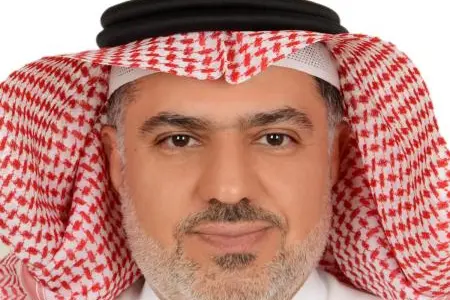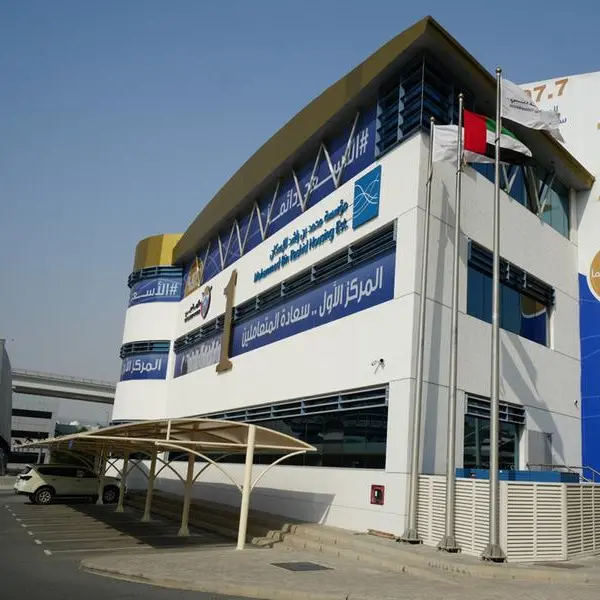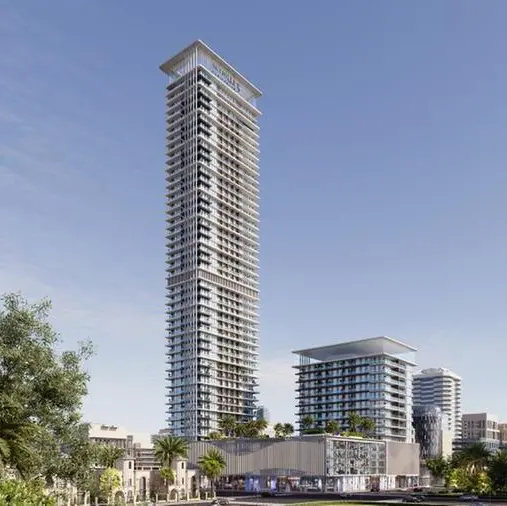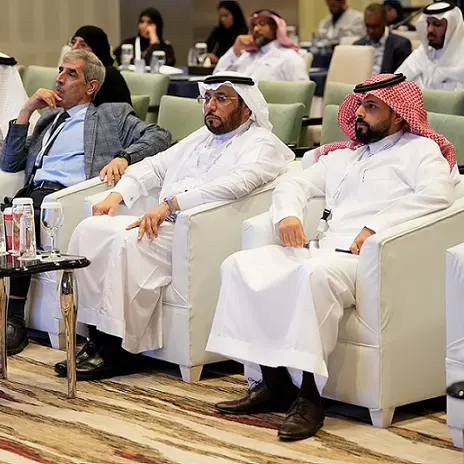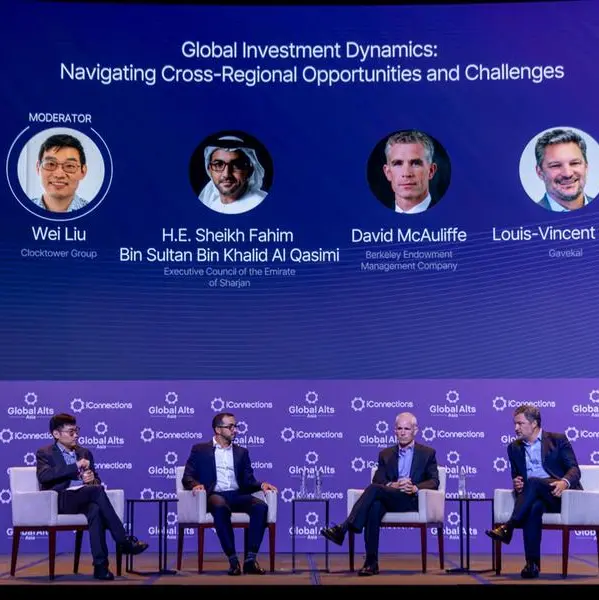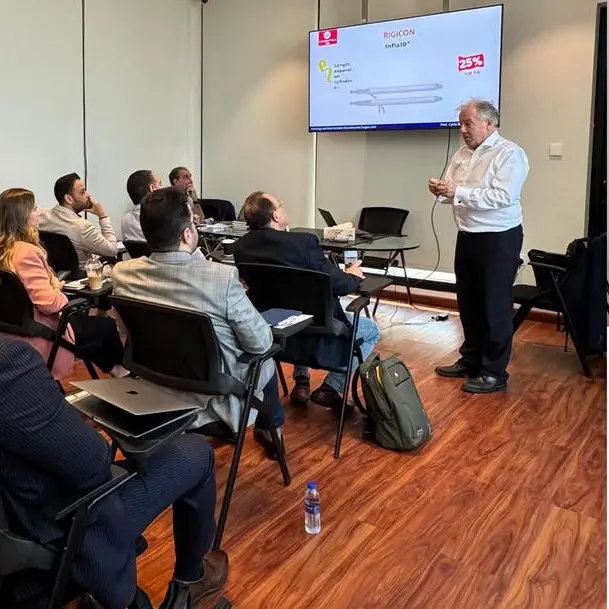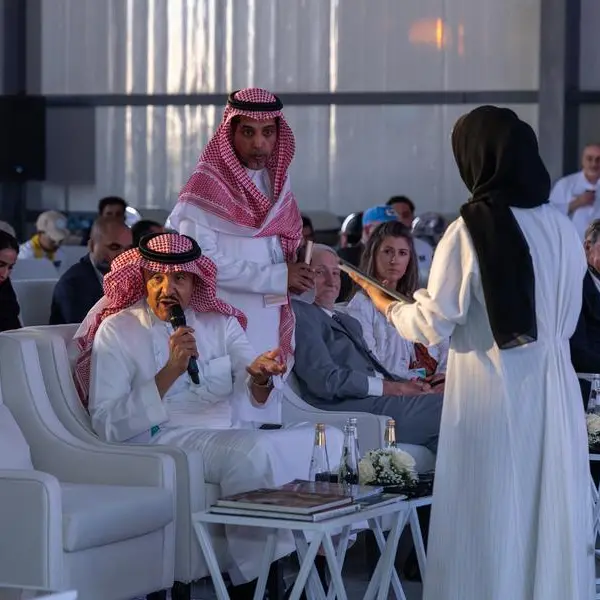PHOTO
Major social and economic reforms pave way for new avenues of investment and growth in the real estate sector
KSA: The introduction of social and economic reforms in 2017 represented a key turning point for the Kingdom of Saudi Arabia with new avenues of investment now paving the way for positive economic and real estate growth in what is set to be a year of ‘implementation’ ahead, says JLL.
Oxford Economics forecasts a return to positive real GDP growth (2%) in 2018, following a minor contraction of 0.7% recorded in 2017. According to JLL’s KSA real estate report, this has resulted in many investors, entrepreneurs and businesses now exploring new opportunities and areas of investment as a result of the significant reforms introduced in 2017.
The government also took measures to reduce the fiscal debt in 2017 and introduced a stimulus package, waiving fees for small businesses and investors, which in turn will bolster housing construction. The resulting 2018 budget includes the largest ever proposed spending of SAR 978 billion, a 5.6% increase compared to actual spending in 2017.
Landmark changes in the Kingdom in 2017 such as lifting the ban on women driving will see a positive surge in demand in not only the auto industry, but its support sectors. This and other reforms should continue to translate into positive economic growth.
The Public Investment Fund (PIF) announced a number of projects in 2017, aimed at enhancing the Kingdom’s tourism and entertainment sector, extending ample opportunity for the hotel and retail sectors in the year ahead. Major investment opportunities are also on the horizon including NEOM, which is backed by USD 500 billion from the PIF. If successful, the project could become a major hub for population and economic activity.
“With the introduction of various social and economic reforms in Saudi Arabia, we embraced the transitional phase of the economy in 2017, in line with the National Transformation Program and the Saudi Vision 2030,” said Eng. Ibrahim Albuloushi, Country Head, KSA, JLL.
“The year ahead focuses on the implementation phase of the reforms highlighting growth in the tourism sector where the hospitality and retail sectors are poised to benefit, as the government eases visa requirements for tourists,” he added.
With the implementation of VAT at 5% at the start of 2018, cost of buying goods and services will increase. The sale of commercial properties and residential sales will be taxed (although sales to first home buyers up to SAR 850,000 will be exempt). Although residential rents will be exempt, hospitality and commercial rents will be subject to VAT.
The latter half of the year saw further home financing options introduced, with the PIF and the Ministry of Housing partnering to create the Saudi Real Estate Refinance Company in October 2017. This partnership aims to increase home ownership in Saudi to 52% by 2020.
Seven Real Estate Investment Traded Funds (REITs) were listed in 2017, bringing the total number of funds now trading on the Saud’s Stock Exchange to eight. REITs benefit both developers and investors by expanding the former’s investor base, and providing the latter with smaller scale investment opportunities in the real estate sector. The success to date of listed REITs, and the strong market appetite for them, will see further REITs listed in 2018, with the CMA’s recently approving at least five further REITs.
KSA market summary-
Riyadh Office Market Summary
Supply
2017 witnessed the completion of approximately 144,000 sq m of office GLA. This brings the total office GLA in Riyadh to 3.9 million sq m as of Q4 2017. A notable completion in Q4 2017 was the Edhafah Tower office part on Makkah Road (9,000 sq m).
Looking ahead, the level of new supply forecast to enter the market is expected to increase significantly. Around 660,000 sq m is currently scheduled to complete in 2018. Notable expected completions include Majdoul Tower (75,000 sq m), Ar Rajhi Tower (30,000 sq m), Cayan Mefic Centre (12,000 sq m) and Malathek 1 (20,000 sq m) – all of which are situated on King Fahad Road. While the majority of expected supply in 2018 is situated along King Fahad Road, the buildings vary in grade and appeal to different occupants’ needs. In an increasingly competitive market, some of the upcoming properties enjoy better parking ratios and proximity to desirable amenities including F&B outlets, to 5 star hotels.
Another factor that will impact the office market in Riyadh over the next few years will be the metro. Construction progress is reported to have reached 62% as of Q4 2017, with testing scheduled to begin mid-2018 for one year. Public transport will enhance accessibility to the CBD, and proximity to metro stations could become an important factor in tenants’ location choices. One of the big four stations is situated within King Abdullah Financial District (KAFD), which will become Riyadh’s new CBD once completed.
Performance
Office market performance remained broadly unchanged in 2017, with average rents declining by just 1% Y-o-Y to SAR 1,245 in Q4 2017. Market wide vacancies stabilised at 15% in Q4 2017, but may increase again in 2018.
Market performance is expected to remain soft in 2018, with some companies downsizing and competitions from new projects, including KAFD, placing further downward pressure on rents and occupancies once they enter the market. Continued delays in construction of major projects have helped stabilise performance and rents in existing Grade A buildings in 2017.
With capital expense reduction a key priority, more tenants opted to occupy previously occupied space rather than new, shell and core offices in 2017. This is due to the lower expense of utilising existing, used office materials, compared to investing in new fit outs.
Jeddah Office Market Summary
Supply
There were no completions in the office sector over Q4 2017 (despite there being a number of projects in advanced stages of construction) with office stock in Jeddah remained at around 1 million sq m of GLA. Construction delays pushed approximately 51,000 sq m of GLA into 2018. These delays in project materialisation are caused in part by the reliance of landlords on preleasing income to complete construction. Given the current market conditions, which has seen weakening demand from tenants, landlords have not been able to secure the required income to complete projects, or have been deterred from injecting further capital into projects until market conditions improve.
Future office supply in Jeddah is now expected reach 108,000 sq m and 69,000 sq m of GLA in 2018 and 2019 respectively. Likely notable completions in 2018 include Al Zagzoog Business Centre (15,800 sq m) on King Abdullah Road, Randa Tower (7,500 sq m) and Ibrahiem Centre (10,700 sq m) on King Abdulaziz Road, and Lilian Towers Phase 1 (15,000 sq m) on Prince Sultan Street. The continued progression of the office sector towards the north of the city is evident with the development of Al Yasmin Tower along the north side of King Abdulaziz Road.
Performance
Vacancies in the office sector in Jeddah reached 20% in Q4 2017 an increase of 6 percentage points Q-o-Q and 13 percentage points Y-o-Y. Office rents experienced a continuous decline during 2017 as a result of depressed demand and gradually increasing supply. Q4 2017 was no exception, with office rents declining by 12% Y-o-Y, but at a much slower rate of decline of 1% Q-o-Q. While this may suggest office rents are close to bottoming out in 2018, this is unlikely to be the case as new supply is expected to enter the market. As competition increases, tenants will be able to negotiate better rents and additional benefits to their tenancy terms such as longer grace periods, additional parking spaces and better service provision.
International firms currently eyeing the Saudi market as a result of more inviting economic and investment reforms, and considering setting up bases in Jeddah, will find favourable office market conditions in 2018.
DMA Office Market Summary
Supply
Approximately 119,000 sq m of office GLA completed in 2017, which is a significant increase compared to 2016, when just 82,000 sq m of GLA entered the market. The office market in the DMA witnessed a number of completions in H2 2017, including the Business Quarter by Muhaidib (28,800 sq m), and Al Shatea Business Centre (38,400 sq m) in Q4 2017. In addition to Burj Khamees (2,700 sq m), and Barandah Project (1,000 sq m) earlier in Q3 2017. This brings the total office GLA in the DMA to around 870,000 sq m as of Q4 2017.
Future supply scheduled for completion amounts to 90,000 sq m and 50,000 sq m of GLA in 2018 and 2019 respectively. Assuming expected projects complete on schedule, the market is expected to reach one million sq m by 2020 – which will mark a new milestone for office supply in the DMA. Major projects currently under development include AbdulaKareem Tower (43,000 sq m), AlWaleed business centre (5,800 sq m), Al Raja Business Avenue (6,000 sq m) and Sidra Complex (5,200 sq m), all of which are expected to complete in 2018.
While mid-scale projects continue to enter the market, there is also a notable supply pipeline of smaller offices (those less than 10,000 sq m) expected to enter the market. This is reflective, and positive, of a currently oversupplied market. This may also help curb the impact on performances in the long term should the local economy improve.
Performance
The office market in the DMA remained soft in 2017, with market wide vacancies averaging around 36%, and rents at around SAR 1,014 per sq m in Q4 2017. The soft performance of the market can be attributed to a continued slowdown in the local economy. The short to medium outlook remains soft, as future supply looks likely to outpace demand.
In the long term, market performance is expected to improve in line with future demand from the energy sector. Saudi Aramco aims to achieve 70% (up from 45%) localization of energy products and services by 2021 as part of the In-Kingdom Total Value Add (IKTVA) program. Aramco has announced spending plans valued at USD 414 billion (almost SAR 1.6 trillion) over the upcoming ten years – mainly on infrastructure and drilling activities. Additionally, the 2017 IKTVA Forum and Exhibition event held in December 2017 in Dhahran featured over 140 investment opportunities for SMEs, valued at around USD 16 billion (SAR 60 billion). The materialisation of such initiatives could see an upturn in the local economy, and consequently in office performances.
Makkah Office Market Summary
Supply
The total supply of office GLA in Makkah remained stable over the H2 2017, with no recorded completions, compared to the first half of the year, which witnessed the completion of several properties. The expected supply of around 4,000 sq m (less than the previously forecast 20,000 sq m due to the conversion of some office space to retail space) has been pushed to 2018. Expected office completions in Makkah in 2018 are now expected to reach almost 8,000 sq m of GLA. The projects under development are Al Khaldiyah Project (3,600 sq m), and Al Zaydi Commercial Centre (4,000 sq m). With no new office projects announced in the second half of 2017, little additional office space is likely to be delivered before 2020.
Performance
Vacancies in Makkah decreased during H2 2017 by around 3 percentage points compared to the same period in 2016, but remained stable compared to H1 2017 at around 16%. The stable vacancies are largely due to a large take up of office space in one building which balanced out the increasing vacancies witnessed in other buildings. Office rents weakened by around 13% in H2 2017 to reach an average SAR 551 per sq m.
Looking ahead, the limited supply of office space expected to enter the market, and the increasing number of pilgrims, should bode positively for the office market in Makah, and curb the market effects on performances to see some stabilization in rents. The expected completion of the Haramain High Speed Rail in 2018 may, however, soften demand for office space in Makkah. As contractors and construction companies involved in the project downsize their presence in Makkah.
Riyadh Residential Market Summary
Supply
The supply of rental units serving senior executives, expatriates, and short-term visitors continues to grow, while the issue of affordability for mainstream residential units remains. Nearly 19,500, mostly stand-alone units, completed in 2017. Notable completions in Q4 2017 included the third phase of Darraq in the Diplomatic Quarter (76 villas and 35 apartments), and the Sahab Villas (22 villas completed in Q4 2017, with six villas due for completion in Q1 2018). This brings the total residential stock to 1.2 million units. The market is expected to witness the completion of a further 20,000 units in 2018 and 19,000 units 2019 respectively.
A number of developers are expanding their upper quality and luxury offerings within high-rise developments. Some of the likely high-rise completions in 2018 include Rafal Living (350 apartments), the two Damac Towers (440 apartments), Malazak Tower (245 apartments) and in 2019 Ramlah Tower (249 apartments).
In Riyadh, the Ministry of Housing distributed nearly 55,200 products to facilitate home ownership in 2017. This assistance consisted of 23,600 completed and off-plan residential units, 6,600 developed residential land plots, and 25,000 subsidized housing loans. This is a positive move towards improving home ownership rates in Riyadh, as the private market remains more focussed upon high-end developments.
Performance
The number of apartments transacted in 2017 increased by 12% compared to 2016, while prices decreased 1% Q-o-Q and 4% Y-o-Y, illustrating the negotiating power of homebuyers given market conditions. The number of villas transacted decreased nearly 16% in 2017, while prices declined by 5% Y-o-Y. Villa and apartment rents remained unchanged in Q4 2017, but decreased by 5% Y-o-Y.
Further declines in rents can be expected following the introduction of the levy on expatriate dependents in mid-2017. This resulted in some expatriates repatriating family members, and relocating to smaller units and bachelor studios. Resulting in a general shift in the market from larger, family units (3 bedrooms), to smaller units. Demand will likely continue to weaken as the levy progressively increases over the next three years.
Jeddah Residential Market Summary
Supply
Residential supply in Jeddah increased by around 10,000 units to 813,000 units in 2017. Only around 1,000 units entered the market over the last quarter of 2017, with no notable completions. Looking ahead, future supply estimates over the next two years have been revised to a more conservative estimate based on the lower rate of electricity meter applications.
The near completion of a number of residential developments, including J-One (242 apartments), Diyar Al Salam Residences (140 apartments), Golden Tower (85 apartments), Bayat Plaza (282 apartments), and Abraj Al Hilal 2 (308 apartments), will likely see up to 1,100 quality apartments enter the market in early 2018. A further potential 2,400 apartments, part of the first phases of Al Ra'idah, could be delivered in 2018 if the first phase of the project is handed over as planned. Should this occur, it would mark the largest delivery of community style residential units in Jeddah in one year. The first phase of Al Ra'idah is already touted to deliver the largest single delivery of residential units in one go. Looking ahead, this is a trend which is likely to continue in Jeddah given the growing number of planned master communities in the pipeline. Smaller developers are also increasing the supply of more affordable residences for younger households.
UAE based developer Manazel Real Estate announced it will enter the Saudi market by the end of 2018. Given this developer specialises in the delivery of affordable homes, this will come as welcomed news to lower and middle-income households in Saudi.
Performance
Residential sale prices and rents declined across the Jeddah market in 2017. However, signs of stabilisation have begun to emerge, with the rate of decline slowing towards the end of the year. While apartment rents remained relatively stable across Jeddah in Q4 2017, they showed a slight dip (2.7%) Q-o-Q in areas synonymous with expatriates. The tax levy on expatriates could be restricting demand for rentals, as expatriates repatriate family members to avoid the levy. Y-o-Y rents saw a sharper decline of 10.9%. Villa rents remained relatively stable Q-o-Q having declined by a marginal 0.3%, and by a less profound 2.4% Y-o-Y compared to apartments.
Sales prices declined across the board, which is in line with the data recorded by the Ministry of Justice that saw the combined value of residential transactions decline by 4.4% in Jeddah in 2017. 2018 is expected to witness a further slowdown in the rate of decline of residential prices.
DMA Residential Market Summary
Supply
Nearly 7,000 units, dispersed around the city as stand-alone villas and apartment buildings, completed in 2017. Notable completions in H2 2017 included Bin Sultan Residential Tower (208 apartments), and a part of the Fursan Project by AlArgan (36 villas), and Al Khobar Eskan project by the Ministry of Housing (272 villas) in Q4 2017. Juman Villas (16 villas), and Ad Dhawahi Project (15 villas) completed earlier in Q3 2017.
A further 7,000 units are scheduled for delivery in both 2018 and 2019. Notable completions scheduled for 2018 include the Grand Residence (63 units), Abraj Saraya Olaya Towers 2 and 3 (216 units), Murooj Residential Complex B (37 units), Ewaan Al Maali (73 units), Al Saeed Gardens (70 units), Al Khobar Views (32 units), Al Fursan Phase 3 (178 units), Khobar Garden Phase 2 (33 units), and Sawari Residential Tower (130 units).
2019 is likely to witness the completion of Laguna Residence Phase 1 in Dana Bay (32 units), An Nawras 4 (26 units), Al Khobar Residence (134 units). The supply over the next two years shows a notable increase in the number of small to mid-scale residential developments.
The Ministry of Housing has distributed around 44,600 products to facilitate home ownership in the DMA in 2017. Products consisted of 31,200 completed and off-plan residential units, 2,900 developed residential land plots, and 10,400 subsidized home loans, with further units to be delivered under this program in 2018.
Performance
The number of apartments transacted increased 11% in 2017 compared to 2016, which contributed to maintaining stable price levels. On the other hand, the number of villas transacted in 2017 decreased by almost 70%, compared to 2016, with prices decreasing by 3% Y-o-Y and by 2% in H2 2017 relative to H1 2017. This illustrates the clear market preference for apartments, which are more affordable to low and middle income households.
Rental declines were witnessed in older residential units, with most prime residential units maintained asking rents, or accepting a marginal decrease. Apartment average rents decreased by 2% in H2 2017 relative to H1 2017, and 4% compared to H2 2016. Villa rents also decreased by 1% in H2 2017 relative to H1 2017, and 3% compared to H2 2016.
The 12-month outlook remains soft following the Ministry of Labor’s new amendment to the housing allowance regulations in December 2017. The amendment changed the compulsory two-month salary minimum regulation leaving it open to negotiation. This may result in lower housing budgets and add downward pressure on housing performances in the long term in not only the DMA, but also other major cities.
Makkah Residential Market Summary
Supply
Approximately 8,000 residential units entered the market in Makkah over 2017. Bringing the total supply of residential units to 384,000.A notable completion in H2 2017 was Tilal Makkah (850 apartments), by Makkiyoon Urban Developers, which offers units for sale for either occupation or investment. The latter of which would be managed by the complex operator. This project exemplifies the grey area often found between the residential and hotel sectors in the Makkah, which sees many landlords leasing their residential units to pilgrimage operators during the high seasons. This results in the use of residential properties alternating between the two sectors depending on the season. This trend is likely to grow in line with the growing number of mega-projects in Makkah, many of which will offer similar types of residential apartments to investors.
Notable future supply includes a further 105 apartments within the second to fourth phases of the Jabal Omar Development. As a large number of upcoming residential units form part of mega projects that are not expected to complete for 5 – 10 years, upcoming supply is expected to remain relatively subdued over the next few years, with around 4,000 residential units scheduled to complete in both 2018 and 2019.
Performance
Makkah was no exception to the weaker market conditions, which impacted residential performances in most major cities in Saudi during 2017. However, given that demand is mostly locally derived, the impact was softer on residential performances in Makkah than elsewhere. Apartment sale prices declined in H2 2017 compared to H1 2017 and H2 2016 by 5.7% and 2.7% respectively. Villa sale prices also declined in H2 2017 compared to H1 2017 by 4.4%, but remained relatively stable compared to H2 2016.
Apartment rents in Makkah also softened in H2 2017 by 3% compared to the first half of the year, but remained relatively stable compared to the same period last year. The softening rents are likely due to households being able to negotiate better rents currently allowed by the market conditions, or opting to relocate to more affordable districts. Villa rents increased marginally in H2 2017 compared to both H1 2017 and H2 2016.
Riyadh Retail Market Summary
Supply
Around 250,000 sq m of retail space entered the market in 2017, which is a significant amount compared to the increase of almost 100,000 sq m in 2016. There were no major completions in Q4 2017.
Looking ahead, the market is expected to witness the completion of 250,000 sq m of retail GLA in 2018, and 415,000 sq m in 2019, which could result in an oversupply scenario in the retail market. Likely completions in 2018 include University Avenue (51,560 sq m), Khaleej Mall (51,450 sq m), Elite (11,000 sq m), Dheyafah (9,000 sq m), Turki Square (2,400 sq m), and Adh Dhahiah Centre (2,200 sq m). Other notable completions expected in 2019 include Qurtuba Boulevard (72,000 sq m), , Elegant Centre(13,500 sq m), and Reef Commercial Centre(11,000 sq m). Should all the projects materialise, total retail GLA in Riyadh could reach 2.6 million sq m by 2020.
The majority of future supply is situated in northern Riyadh, with projects varying in size from convenience, community, neighborhood, regional, and super regional centres, to serve the growing population in this area. A number of announced regional and super-regional malls continue to be on hold. Moreover, there were fewer project announcements in 2017 relative to previous years, which signals a potential slowdown in the delivery of retail space in Riyadh in the longer run.
Performance
2017 was a relatively stable year for the retail sector in Riyadh. Q-o-Q rents declined by less than 1% in Q4 2017 in regional and community centres. Regional centre rents remained stable, and community centre rents declined by 3% Y-o-Y. Market-wide vacancies remained largely stable in 2017, standing at around 9%.
The concept of ‘shoppertainment’ will remain key in 2018. With a number of international cinema operators looking to enter the Saudi market in partnership with local malls. Riyadh will be a key market given its large population and the limited entertainment options currently available in the city.
The USD 1 billion e-commerce platform, Noon.com was launched in Saudi in Q4 2017. While online platforms can have a negative impact on traditional retail formats, some welcomed this as positive news, on the basis that traditional retail and e-commerce formats can complement each other rather than always competing.
The latest data from SAMA on the Riyadh market shows an increase of 31% and almost 8% in the number of point of sale transactions and their value respectively in YT November 2017, compared to the same period in 2016.
Jeddah Retail Market Summary
Supply
Approximately 48,000 sq m of retail GLA entered the market in 2017. Completions ranged between convenience and community centres, in addition to the partial opening of centres (Jeddah Park) or expansions (Red Sea Mall). There were no further completions in Q4 2017 with the remaining expected supply due in 2017 (12,000 sq m) being pushed out to 2018. Forecasted completions in 2018 now stand at around 181,000 sq m of retail GLA.
Expected supply in 2018 is spread between the remaining retail component of Jeddah Park, a number of convenience and neighbourhood centres that are part of residential and office developments (Bayat Boulevard, and Jeddah Gate, Lilian Towers Phase 1), and two community centres: Obhur Mall (18,300 sq m), and the redevelopment of Al Basateen Centre (13,000 sq m).
Coral Boulevard, previously Coral Mall, is the latest shopping centre in Jeddah to undergo renovation, and is expected to reinstate approximately 12,900 sq m of retail GLA into the market in 2019. Total forecasted supply for 2019 is expected to reach around 148,000 sq m of retail GLA. Other notable completions in 2019 include the recently announced Al Nawras Centre by SEDCO Development, which is expected to add approximately 15,000 sq m of retail GLA to the market.
Lifting the ban on cinemas could potentially see an increase in retail GLA in existing shopping centres, as owners convert open space, or release space retained for this purpose in anticipation of the announcement, to rentable space.
Performance
Tenant negotiating power strengthened in Q4 2017 due to uncertain market conditions resulting in softer performances in previously well performing shopping centres. Contrary to this trend, Jamjoom Commercial Centre recently increased its occupancy rate, and rents, by leasing the bulk of its vacant space to a major tenant. As a result, regional shopping centres showed a marginal increase of 1.5% over the last quarter of 2017, but still declined by 0.8% Y-o-Y. Super regional centre rents remained stable over the quarter, but declined by 5.4% Y-o-Y. Vacancies declined in Q4 2017 to reach 7%, compared to 10% in Q4 2016. Again, this is attributed to a significant boost in just one shopping centre, and is not reflective of improved market conditions, which remain volatile. As a result, performances are expected to soften further in 2018.
According to SAMA, the number and value of point of sale transactions showed an increase of almost 25% and 4% respectively YT November 2017, compared to the same period in 2016. Incorporating cinemas in shopping centres could potentially see improved performances. Particularly as some centres are expected to utilise their vacant space, which could see more resilient performances in future.
DMA Retail Market Summary
Supply
Nearly 77,000 sq m of retail GLA entered the market in 2017, more than double that completed in 2016 (25,500 sq m). Notable completions in H2 2017 included the Barandah Project (4,300 sq m) which entered the market in Q3 2017, and Al Shatea Business Centre (4,000 sq m), Arena Centre (3,000 sq m), and Al Shukri Gate (2,200 sq m), which entered the market in Q4 2017. The completions in 2017 brought the total stock of retail GLA in the DMA to around 1.1 million sq m.
A total of around 85,000 sq m of regional, neighbourhood, community, and convenience centres are expected to enter the market in 2018. Expected completions include Villagio (14,000 sq m), Awan Gallery (6,500 sq m), Roofs project (5,600 sq m), Al Raja Business Avenue (3,000 sq m), Sidra Complex (1,300 sq m), and Al Waleed Business Centre (1,200 sq m).
Performance
Average rents decreased slightly over the year, with community and regional centre rents declining by 3% and 2% Y-o-Y respectively. Rents in regional malls remained unchanged in H2 2017 compared to H1 2017 whereas community centre rents declined again by 3% in H2 2017 compared to H1 2017. Super regional rents remained stable for both periods. The slight declines were accompanied by a 1% increase in market wide vacancies.
Latest data from SAMA on point of sales shows a notable improvement in spending in Dammam. The number of point of sale transactions increased by 24%, while the value increased by 7% YT November 2017 relative to the same period last year.
While utility prices will increase further in 2018, the Citizen Account should protect nationals’ purchasing power against this increase. VAT will inevitably have a negative impact on retail sales but it is too soon to measure this impact. Shopping centre performances could pick up once cinemas open, which may divert demand away from shopping centres in Bahrain, and increase footfall in shopping centres in the DMA.
Makkah Retail Market Summary
Supply
Following the completion of around 7,000 sq m of retail space in H1 2017, there were no further notable completions in H2 2017. Approximately 34,000 sq m of GLA has been delayed into 2018, bringing the total expected retail supply in 2018 to 37,000 sq m. The most notable project due to complete in 2018 is the second phase of the Jabal Omar Development, which should add approximately 24,000 sq m of retail GLA to the market.
With relatively few planned shopping centres in the pipeline, most of the future retail supply in Makkah is expected to be delivered as part of a number of mega projects. As most of these projects are at the early stages of construction, announced or under study, it will take time for the supply pipeline to materialise. While these projects could potentially deliver up to 400,000 sq m of quality retail space in Makkah between 2020 – 2025, further delays and slippage can be expected. In the immediate future, new supply of retail in Makkah is expected to remain relatively subdued and small-scale.
Supply (sq m of GLA)
Performance
Retail performance in Makkah weakened over the second half of 2017, particularly in the central Markazia area. Centres located in other parts of the city showed stronger occupancies with most centres reaching full occupancy, while occupancies in the Markazia area weakened. The result balanced out occupancies on a citywide basis leaving them relatively unchanged at 6% in H2 2017, compared to the first half the year. Occupancies declined by around 2% in H2 2017, compared to H2 2016.
While rents in regional and neighbourhood shopping centres remained stable both Q-o-Q and Y-o-Y, rents in community centres declined by 9.1% in H2 2017 compared to H1 2017, and 6.5% in H2 2017 compared to the same period in 2016. Rents in shopping centres in the Markazia area declined by 7.5% in H2 2017 compared to H2 2016, and more marginally by 1.8% compared to H2 2017.
Latest data from SAMA shows the number and value of point of sale transactions in Makkah increased by 27% and 4% respectively YT November, compared to the same period in 2016.
Riyadh Hotel Market Summary
Supply
Nearly 600 keys were added to the market in Riyadh in 2017, but there were no branded quality completions in Q4 2017. The total stock of quality hotel rooms currently stands at around 12,100 keys, which can accommodate nearly 4.4 million room nights per year.
A further 3,200 and 2,000 keys are scheduled to complete in 2018 and 2019 respectively. This represents a significant amount compared to the 600 keys added in 2017 but delays to the supply pipeline can be expected, which could potentially push the delivery of around 1,000 keys to later years.
Likely completions in 2018 include the Hilton Riyadh Hotel & Residences (645 keys), Crowne Plaza (386 keys), and Fairmont Riyadh Business Gate (298 keys). The majority of new supply is situated near the CBD, and in close proximity to King Khaled International Airport to maximize accessibility for business visitors.
In response to rising competition in the market, a number of hotels are undergoing renovation and expansions. The Narcissus Hotel, which opened in 2013, is expanding by building the adjacent Narcissus Classic Tower (90 keys), which will likely complete in 2019. The Crowne Plaza Hotel Riyadh Minhal is also expanding by an additional 80 keys next to the existing property in the Wizarat District, and is scheduled to complete in 2019. In addition to expanding, hotel renovations typically involve the addition of new features and facilities such as swimming pools and restaurants.
Performance
The performance of the hotel sector in Riyadh continued to soften in 2017, with ADRs declining 9% YT November to reach USD 190, down from USD 208 last year. Occupancies remained stable at 54%, While RevPAR declined by 11% YT November to reach USD 101 down from USD 113 during the same period last year.
Weaker performance was the result of additional room supply and declining demand, which remains heavily dependent upon business travelers. One of the notable events in 2017 was the Future Investment Initiative hosted by the Public Investment Fund in October 2017, with more than 3,500 participants from 88 countries. The decision to start issuing tourist visas in Q1 2018 should help grow demand from the leisure sector and reduce Riyadh’s reliance on corporate demand.
With a combined 5,200 keys scheduled for delivery in 2018 and 2019, further downward pressure on occupancies and ADRs is likely in the short term.
Jeddah Hotel Market Summary
Supply
Only half of the 900 keys expected to open in Q4 2017 materialised, with the soft opening of the Hotel Galleria by Elaf (445 keys) holding its soft opening. This brings the total supply of quality hotel rooms to around 10,800 keys. The number of keys that entered the market in 2017 (1,000) is roughly on par with 2016 (1,200). A similar level of new supply (1,700 keys) is expected to enter the market in 2018, with most of these projects at an advanced stage of construction.
The expected completions in 2018 will introduce a number of new brands to the market including the Salsabil by Warwick (144 keys), and the Park Inn by Radisson (84 keys). In addition to the growth of operators already present such as Carlson Rezidor with the Radisson Blu Hotel & Residence Corniche (100 keys), Mövenpick with Mövenpick Hotel & Apartments Al Tahlia Jeddah (164 keys) and Rotana with the Centro Al Salama (189 keys). Two veteran hotels, the Sunset Hotel and the Marriott Jeddah are both undergoing redevelopment, with the former expanding its inventory and expected to re-open by 2019.
The completion of the fourth and sixth stages of the Jeddah Waterfront redevelopment, combined with the city hosting a number of entertainment events over the year, will further support the diversification of the tourism base in Jeddah. The announced Jeddah Downtown mixed use development, which will include several hotels and hospitality components, will also benefit Jeddah’s hospitality market by further enhancing the city’s popular waterfront, benefiting leisure demand.
Performance
Occupancy rates declined by 7 percentage points to reach 61% YT November compared to the same period last year. ADRs declined at a slower rate of 1.5% compared to the same period last year to reach USD 255. RevPAR dropped more significantly by 7.6% YT November to reach USD 159. Reduced demand from the corporate sector, changing market dynamics and the fact that leisure demand has yet to reach its full potential, have all contributed to the lower performances in Jeddah’s hotel sector.
Weaker performances should not deter hotel operators considering entering the market in Jeddah. In an increasingly competitive market, opportunities exist for properties that are responsive to the city’s changing dynamics. For example, properties located near exhibition or conference centres, or those that provide these facilities, are likely to benefit from the increasing number of entertainment, conference and business events being held in the city.
DMA Hotel Market Summary
Supply
The opening of internationally branded hotels was relatively limited in the Dammam Metropolitan Area (DMA) in 2017. There was only one hotel completion in the year, the Radisson Blu Resort Half Moon Bay (136 keys), which entered the market in Q4 2017. The Radisson is the second opening by Carlson Rezidor in the DMA in 2017, following the delivery of 92 serviced apartments earlier in the year, in line with the brand’s growth strategy. 2017marks a relatively inactive year for the hotel sector relative to the completion of 500 keys in 2016 and 1,000 keys in 2015. This reduced supply bodes well for the sector, which has been underperforming lately.
The total stock of quality hotel rooms currently stands at around 6,600 keys, which could accommodate a potential total of 2.4 million room nights per year. The majority of the quality branded hotels fall within the 4-star category and are focused on serving the corporate and leisure segments.
Around 800 keys are expected to complete in both 2018 and 2019, but given that the progression of some properties is slowing down, delays can be expected and some opening dates could move out to 2020 or even later. Likely completions in 2018 include the Hilton Garden Inn Al Khobar (199 keys), Park Inn by Radisson Hotel Dammam Industrial City (201 keys), with the Centro Hotel by Rotana (250 keys), and Swiss-Belhotel Al Khobar (99 keys) scheduled to complete in 2019.
Performance
The hospitality sector in DMA continued to soften in 2017. Occupancies declined nearly 3 percentage points compared to the same period in 2016 to reach 48% YT November 2017. ADRs have declined nearly 9% YT November 2017 to reach USD 148, down from USD 163 in 2016. As a result, RevPAR has witnessed a significant decline, down nearly 16% from USD 84 in YT November 2016 to USD 70 for the same period in 2017.
Data from the operator of the King Fahad Causeway shows an 8% decline in the number of travelers departing from Saudi to Bahrain during the Eid Al Adha Holiday (first three days of September 2017), declining from 275,000 travelers in 2016 to reach 254,000 travelers in 2017. The launch of cinemas in the Kingdom in 2018 could draw demand away from shopping centres in Bahrain and further reduce the number of travelers going to Bahrain over the next 12 months. Demand for tourism in DMA is also expected to increase following the announcement that Saudi will begin to issue tourist visas in Q1 2018.
Makkah Hotel Market Summary
Supply
Two internationally branded properties opened in Makkah over Q4 2017: Holiday Inn Makkah Al Aziziah (1,238 keys), and the Sheraton Makkah Jabal Al Kaaba Hotel (412 keys). The total number of quality hotels keys, which entered the market in 2017 reached almost 5,600 keys, bringing the quality stock to around 36,800 keys. Materialization and completion rates in 2017 were however below forecasts, with many openings postponed to next year. 2018 is now expected to see an increase of 8,400 keys or 22% of the current quality stock.
Announcements of new brands planning to enter the Makkah market continued in the second half of 2017 with the signing of Jabal Omar Jumeirah Makkah Hotel (1,126 keys), expected to operate in 2019, and the Four Seasons (375 keys), also part of the Jabal Omar Development
As new hotel announcements continue, and 17,500 keys are expected to enter the market over the next two years, increasing the number of pilgrims visiting Makkah will be vital. To this effect, we have already seen the 20% Hajj pilgrim quotas lifted, and the Umrah season extended by a month, in 2017. Further measures to grow the number of pilgrims during the 2018 seasons are expected. These include the expected operation of the new King Abdulaziz International Airport in Jeddah (with a capacity of 30 million passengers per annum), and the operation of the Haramain High Speed Railway (with a daily capacity of 240,000 passengers), in 2018.
Performance
The relaxation of visa quotas resulted in an increase in Hajj and Umrah pilgrims by 26% and 5% respectively during the 2017 seasons. Despite the increase in the number of pilgrims in 2017, YT November occupancies dropped to 58%, a 7 percentage point decline compared to the same period in 2016, as a result of increasing supply and economic instability in key market feeders such as Egypt. The Government’s commitment to further grow the number of pilgrims in line with the 2030 Vision, provides a positive long-term outlook for quality hotels in Makkah.
YT November ADRs also dropped by 9.8% compared to the same period in 2016 to reach USD 194, which could be attributed to the aggressive pricing strategy of new entrants to the market. As a result, YT November RevPAR dropped by 18.3% to reach USD 116, compared to the same period last year when RevPAR stood at USD 142.
-Ends-
About JLL
JLL (NYSE: JLL) is a leading professional services firm that specializes in real estate and investment management. A Fortune 500 company, JLL helps real estate owners, occupiers and investors achieve their business ambitions. In 2016, JLL had revenue of $6.8 billion and fee revenue of $5.8 billion and, on behalf of clients, managed 4.4 billion square feet, or 409 million square meters, and completed sales acquisitions and finance transactions of approximately $136 billion. At year-end 2016, JLL had nearly 300 corporate offices, operations in over 80 countries and a global workforce of more than 77,000. As of December 31, 2016, LaSalle Investment Management has $60.1 billion of real estate under asset management. JLL is the brand name, and a registered trademark, of Jones Lang LaSalle Incorporated. For further information, visit http://www.jll.com/.
